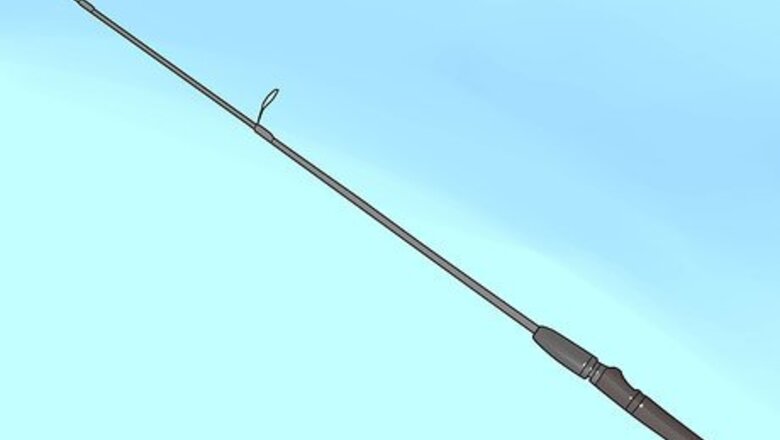
views
Setting up Your Rig
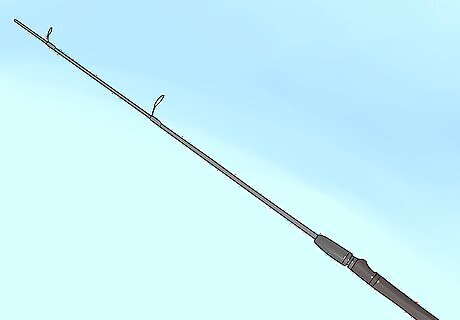
Buy a medium or lightweight rod. You can purchase a general light or medium fishing rod online or at a fishing or game store. Getting a lighter weight rod will make it easier to detect bites as you fish. It will also give your rod enough bend, or action, so that when you move the rod, your bait moves in a realistic way. Manufacturers also create rods specifically made for drop shot fishing, but it isn’t necessary to purchase one to set up your drop shot rig.
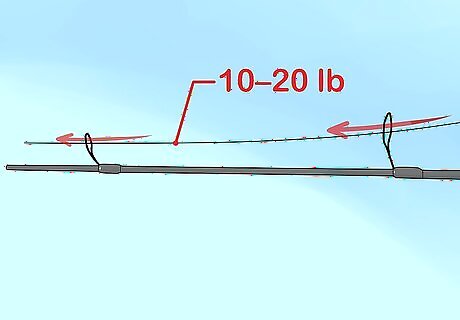
Thread 10–20 lb (4.5–9.1 kg) braided line through the eyelets of your pole. Slide the braided line onto the spool on your pole and turn the reel in a counterclockwise motion to unwind some of the line. Then, take the free end of the line, or the tag end, and run it through the eye on your pole.Pull it out of eye at the tip of your pole so that there’s 8–12 inches (20–30 cm) of excess line.10–20 lb (4.5–9.1 kg) braided line is strong enough to handle the tension from a 5–15 lb (2.3–6.8 kg) fish thrashing at the end of your line.You can purchase braided line online or at a fishing store. Note: Don’t attach your bait directly to braided line because it’s thicker than fluorocarbon and easily visible to many types of fish.
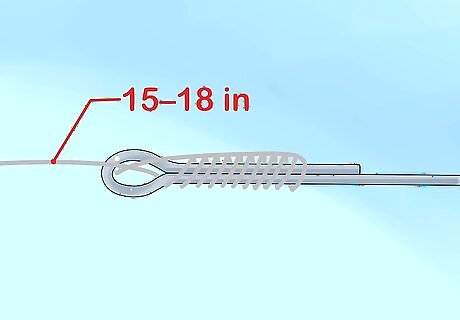
Tie a 15–18 in (380–460 mm) fluorocarbon leader to the braided line. Get 6–8 lb (2.7–3.6 kg) fluorocarbon line for your leader. Use a Unit knot, palomar knot, uni knot, or swivel knot to securely attach the fluorocarbon leader to the braided line. Your weight, hook, and bait will go on this fluorocarbon leader. Fluorocarbon is lighter and less visible to most fish, which is why you should use it at the end of your line. Using a fishing knot will ensure that the leader doesn’t break loose from the braided line.
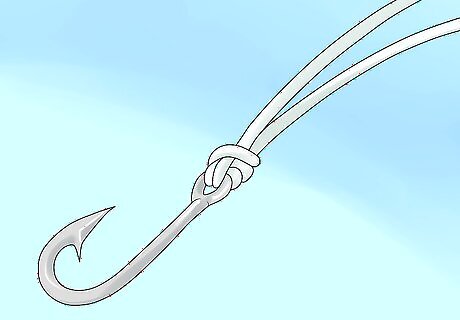
Tie the leader to the hook. Use a size 1-2 drop shot hook when setting up your drop shot rig. Thread the tag end of the leader into the eye on the top of the hook, so that you have 6–8 in (15–20 cm) of line to work with. Then, use a palomar knot, swivel knot, or uni knot to secure the hook to the leader.
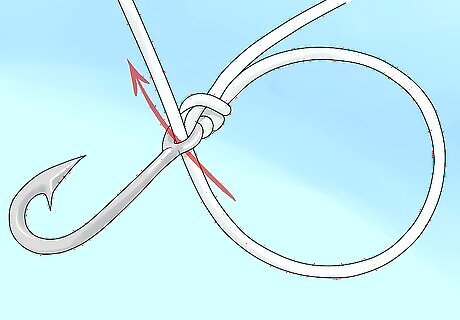
Thread the tag end back through the other side of the hook. Once you’re finished tying the hook to the leader, you must thread the tag end of the leader back through the other side of the eye to orient the hook correctly. Once you’re done threading the tag end back through the eye, the hook should be pointed upwards and to the side. Tip: Leave 10–12 inches (25–30 cm) of slack at the end of your fishing line so that you can attach the weight.
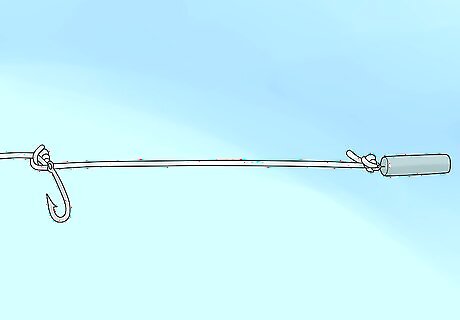
Attach a weight to the fluorocarbon leader. Use a 1–3 oz (28–85 g) weight for your drop shot rig. Take the tag end of the leader and thread it through the eye of the weight. Then, pull up on both sides of the line to wedge the line into the eye and secure it. Snip the excess line from the weight with a pair of scissors. You don’t have to tie a knot to the weight to attach it to the line.
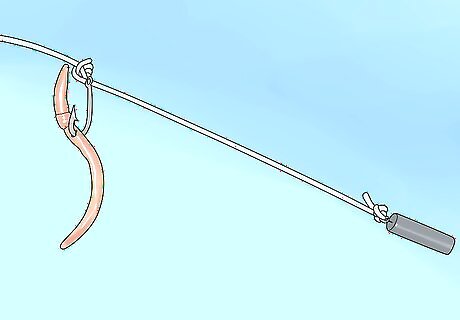
Attach bait to the hook to finish the rig. You can attach live or artificial bait to the hook. Longer, worm-like baits like worms or minnows are best for a drop-shot rig because their tails undulate in the water. Take the bait and pierce it through the nose. This will give the bait the most realistic movement in the water. Examples of bait you could use include shrimp, squid, smelt, sardines, minnows, worms, and nightcrawlers.
Catching the Fish
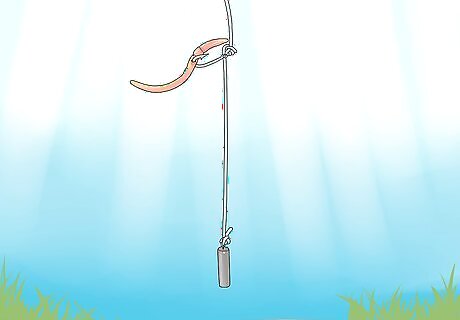
Cast your line into the water and wait for it to hit the bottom. Rotate the reel so that there’s 10–12 inches (25–30 cm) of excess line coming off the tip of your pole. Firmly hold the handle on the pole and flick your wrist while pressing the release button in the direction that you want to cast.Use your thumb as the break, and watch the lure fly out until it hits the surface of the water. Wait 10-15 seconds for the weight to hit the floor in the lake or river you’re fishing in. You’ll feel a slight thump on your line when the weight hits the bottom of the lake floor.You will catch more fish if you cast your line into areas of the water where you know there is a high density of fish.
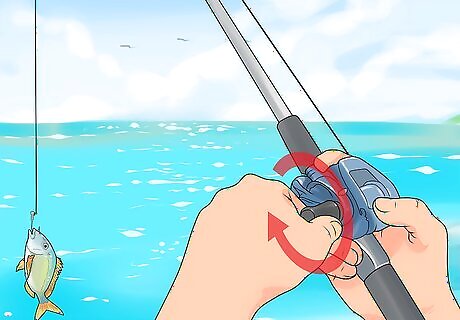
Reel in the line so that it’s taught. Rotate the reel ¼ turn clockwise to pull in the line. The line must feel taut or the bait will sink to the lake or river floor. There shouldn’t be any slack or looseness in the line.
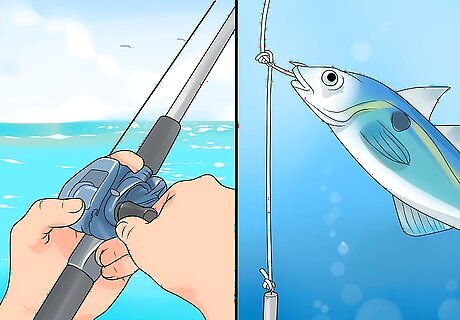
Lift the rod to feel for potential bites. Slowly raise up the rod from your elbow and feel for resistance on the line. If there is no resistance or thumps then there are no fish biting on your bait. If you feel a thump or pull on the line, it means that a fish is biting and you skip the next 2 steps and sink the hook. Tip: Use small and slow movements. Fast and jerky movements may look unnatural and scare away the fish.
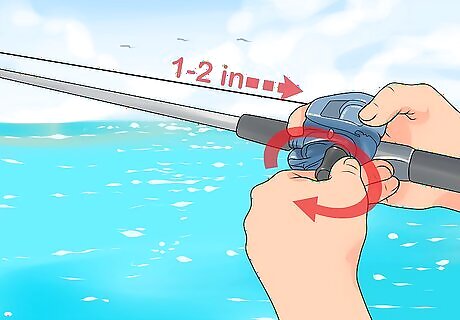
Reel in the line 1–2 inches (2.5–5.1 cm) and check it if you don’t get any bites. If you don’t feel anything on your hook, slowly and slightly reel in the line. Then, lift up your rod again for potential bites. If you feel one, you can sink the hook. If not, then repeat this process until you completely reel in your bait. If you don’t catch anything after casting, repeat the process until you feel more bites.
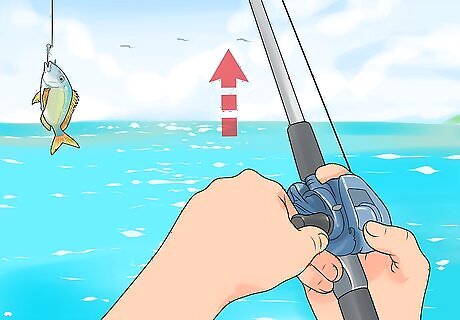
Pull the pole up hard to sink the hook once you feel a bite. Once you get a bite on your hook, pull on your rod in an upward direction to sink the hook into the fish. Then, rotate the reel to bring the fish in towards you. Tip: If the fish is struggling, hold off on rotating the reel and let it tire itself out for a few minutes. Then, once it’s tired, continue reeling it in. Once you bring the fish to you, net it and remove the hook.

















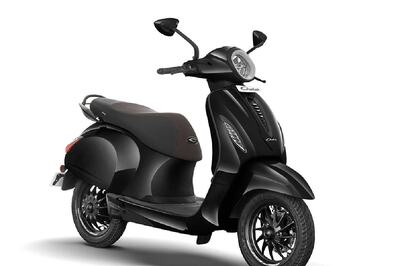

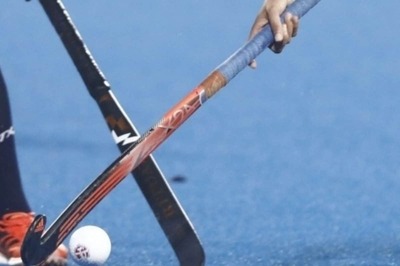
Comments
0 comment